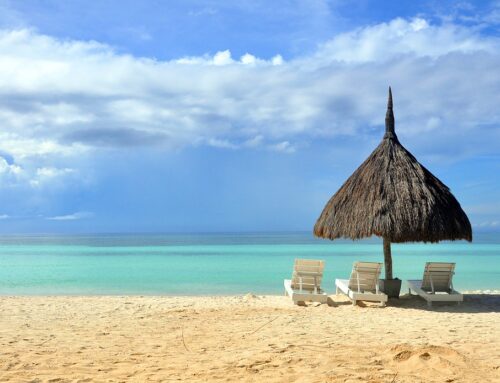
Unveiling Your Philippine Retirement Dream: The Essential Guide to the SRRV Visa
The Philippines, with its breathtaking scenery, friendly people, and affordable cost of living, continues to be a dream destination for retirees. But to turn that dream into reality, you’ll need the right visa. The Special Resident Retiree’s Visa (SRRV) is the key to opening the door to your ideal retirement in the Philippines. This guide explains what makes the SRRV one of the best choices for foreign retirees.
The Benefits of the SRRV: More Than Just a Visa
The SRRV offers far more than just permission to stay. It provides real advantages designed to help you enjoy a worry-free retirement.
Permanent Residency
The SRRV grants you permanent resident status. You can stay in the Philippines indefinitely and travel freely in and out of the country without worrying about visa renewals.
Unlimited Stay
You are free to live in the Philippines for as long as you wish, as long as you meet the program’s simple requirements. No exit dates. No constant reapplications.
Multiple Entry Privileges
You can leave and return to the Philippines as often as you like. Whether you want to travel to nearby countries or visit family abroad, your SRRV keeps the door open for easy re-entry.
Tax Exemptions on Some Foreign Income
Pensions and annuities remitted from abroad may be exempt from Philippine taxes, even if they are not brought into the country. (Note: Income earned within the Philippines may still be taxed.)
Import Duty Exemption
You can bring in personal effects and household goods duty-free, up to a specified value limit. This can help lower your relocation costs as you set up your home.
Travel Tax Exemption
If you’ve been in the Philippines for under a year, you can be exempted from the travel tax when leaving the country. This makes international trips more affordable.
Investment Opportunities
SRRV holders are permitted to invest in certain businesses or properties in the Philippines. It’s a way to grow your money while enjoying life in your new home.
Simplified Business Registration
If you want to start a business, the SRRV makes the registration process easier, so you can move from idea to reality faster.
PhilHealth Access
As an SRRV holder, you can enroll in PhilHealth, the national health insurance program, giving you added peace of mind for your healthcare needs.
The SRRV offers an impressive combination of flexibility, security, and benefits for retirees. In the next section, we’ll break down who qualifies and how you can apply for your SRRV.
Eligibility and How to Apply for the SRRV
The SRRV offers outstanding benefits, but you must meet certain requirements and follow a specific process to qualify. Here’s what you need to know before making your move.
Who Can Apply for the SRRV?
The SRRV program is flexible and welcomes many retirees. Here’s a simple overview of who qualifies:
Age Requirement
-
50 years and older: You can apply with proof of a qualifying pension.
-
35 to 49 years old: You may apply under a special category but must meet higher financial requirements.
Financial Requirements
Your financial situation determines your eligibility:
-
Pensioners (50+ years)
-
Minimum monthly pension of $800 USD (single) or $1,000 USD (couple)
-
One-time deposit of $10,000 USD in a Philippine bank
-
-
Non-pensioners (35 to 49 years)
-
Guaranteed monthly income of at least $800 USD
-
Deposit of $50,000 USD in a Philippine bank
-
Step-by-Step: The SRRV Application Process
The process is very manageable with good planning. Here’s a clear breakdown:
-
Gather Your Documents
Prepare your passport, birth certificate, medical certificate, police clearance (from your home country and potentially the Philippines), proof of income or pension, and marriage certificate (if applicable). -
Select the Right SRRV Category
There are different categories based on age and financial profile. Make sure you apply for the one that fits your situation. -
Open a Philippine Bank Account
Deposit the required amount based on your category. -
Submit Your Application
File your complete application with the Philippine Retirement Authority (PRA) through an accredited agent. -
Wait for Approval
Processing usually takes a few months. Be patient and follow up if needed.
Additional Important Details
-
Medical Exam: You must undergo a medical examination at an accredited clinic in the Philippines.
-
Application Fees: Be prepared for administrative and processing fees.
-
Consider Professional Help: Working with an immigration attorney or accredited PRA agent can make the process much easier and reduce delays.
By understanding the requirements and following this step-by-step approach, you can confidently begin your SRRV journey. In the next section, we’ll share helpful tips to make your application process even smoother.
SRRV vs. Tourist Visa: Which Is Best for Your Retirement in the Philippines?
The Philippines, with its tropical beauty, friendly communities, and affordable lifestyle, attracts retirees from around the world. If you’re considering retirement here, two main visa options stand out: the SRRV (Special Resident Retiree’s Visa) and the tourist visa. Let’s compare the two so you can choose the path that best fits your plans.
The Tourist Visa: A Flexible Trial Run
Pros:
-
Easy Application: Tourist visas are quick and simple to obtain compared to the SRRV process.
-
Short-Term Freedom: Great for retirees who want to visit for part of the year without committing to full-time residency.
-
No Large Deposit Required: There’s no obligation to place funds in a Philippine bank account.
Cons:
-
Limited Stay: Tourist visas are typically valid for 30 days, though they can be extended. Regular renewals can become frustrating for long-term stays.
-
No Work Rights: Tourist visa holders cannot legally work or run a business.
-
Tax and Healthcare Limitations: You may face taxes on foreign income if you stay too long, and tourist visas don’t qualify you for PhilHealth insurance.
-
Uncertain Residency: You won’t have long-term security or guaranteed future access to live in the Philippines.
The SRRV: A Long-Term Retirement Solution
Pros:
-
Permanent Residency: Stay in the Philippines indefinitely without constant visa renewals.
-
Multiple Entry Freedom: Come and go freely without reapplying for a visa.
-
Tax Advantages: Certain income sources are exempt from taxes, stretching your retirement income further.
-
Duty-Free Import Allowance: Save on costs when bringing in personal belongings for your new home.
-
Travel Tax Exemption: Enjoy reduced travel-related taxes after meeting residency conditions.
-
Business and Investment Opportunities: Open the door to business ownership or investments under certain conditions.
-
Healthcare Access: Gain access to the national PhilHealth insurance system for additional peace of mind.
-
Full Community Integration: Become a true resident, making it easier to form strong local connections.
Cons:
-
More Involved Application: The SRRV requires additional paperwork and may take longer to process.
-
Higher Upfront Investment: You must place a qualifying deposit in a Philippine bank as part of your application.
Which Option Is Right for You?
The best choice depends on your lifestyle and retirement goals:
Choose a Tourist Visa if:
You only plan to spend part of the year in the Philippines and want flexibility without the commitment of residency.
Choose the SRRV if:
You want permanent residency, long-term stability, and the full benefits of living, investing, and integrating in the Philippines.

















